In the remote tribal villages of Tana Toraja, nestled in the highlands of Sulawesi, Indonesia, ritualistic sacrifice during the remembrance of one’s ancestors is still the norm.
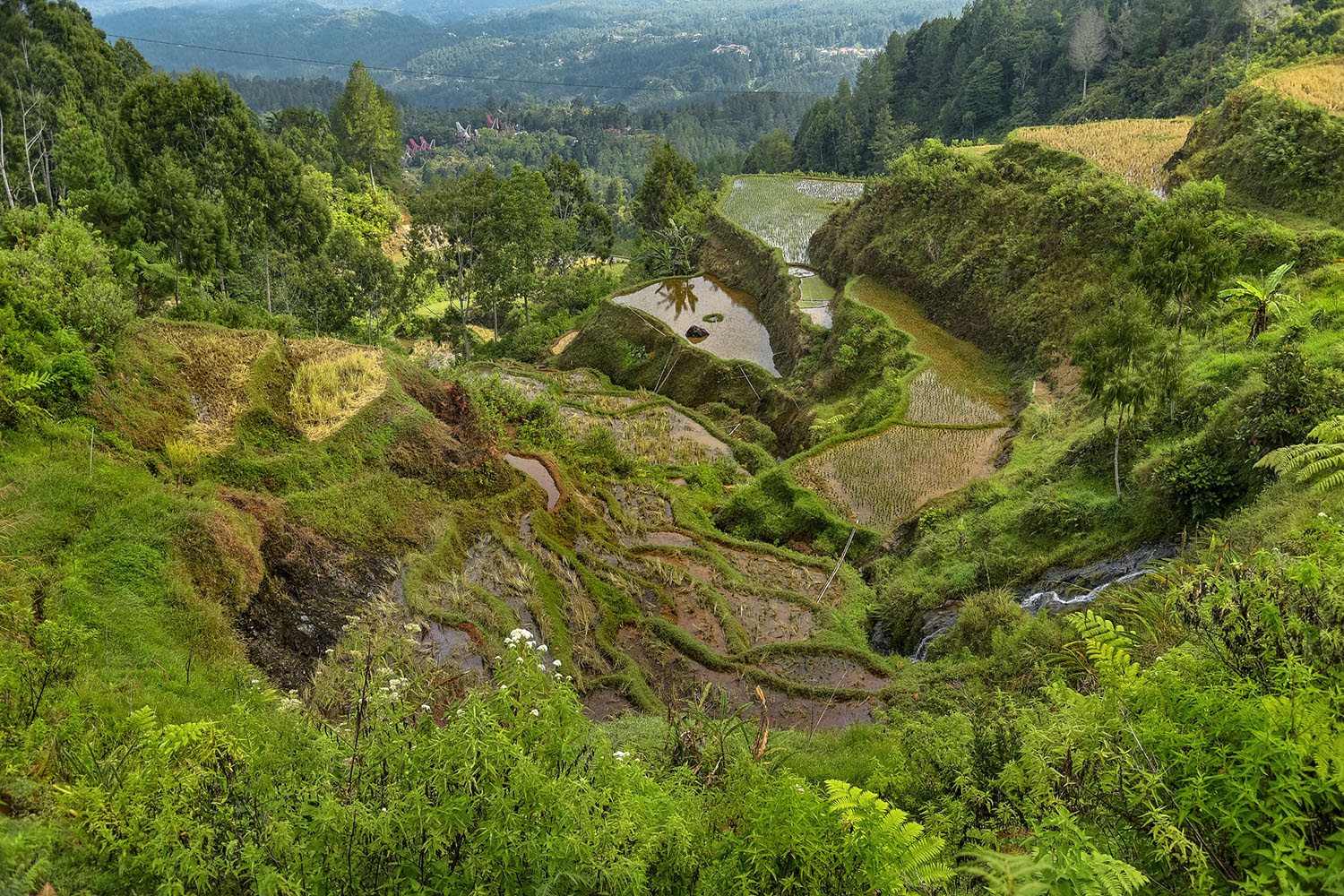
The beautiful landscape of Toraja (Photo: Jorge Franganillo via Flickr / CC by 2.0)
After rejecting my third marriage proposal of the afternoon, I turned to see a smiling old andung shuffling her way towards me.
“A gift for you,” said my translator, as she lifted a shaky arm to hand me the severed leg of a freshly sacrificed pig. It may not seem like the most obvious gift choice to some, but it made perfect sense here, because the people of Tana Toraja worship the dead, and this gift was part of their most sacred ritualistic sacrifice.
An Endangered Way of Life
Earlier that day, before I’d had a chance to drink a coffee or eat breakfast, my guide, Johannes, was a ball of energy waiting for me in the lobby. He eagerly announced across the room: “I’m taking you to a bull slaughter this morning!”
I had some difficulty explaining to him how, as a vegetarian, I would really rather not watch a bull slaughter. He seemed a little perplexed by this, his exciting plans already gone awry, but he simply waved his hands, shook his head and conceded “OK, OK we’ll do something else.”
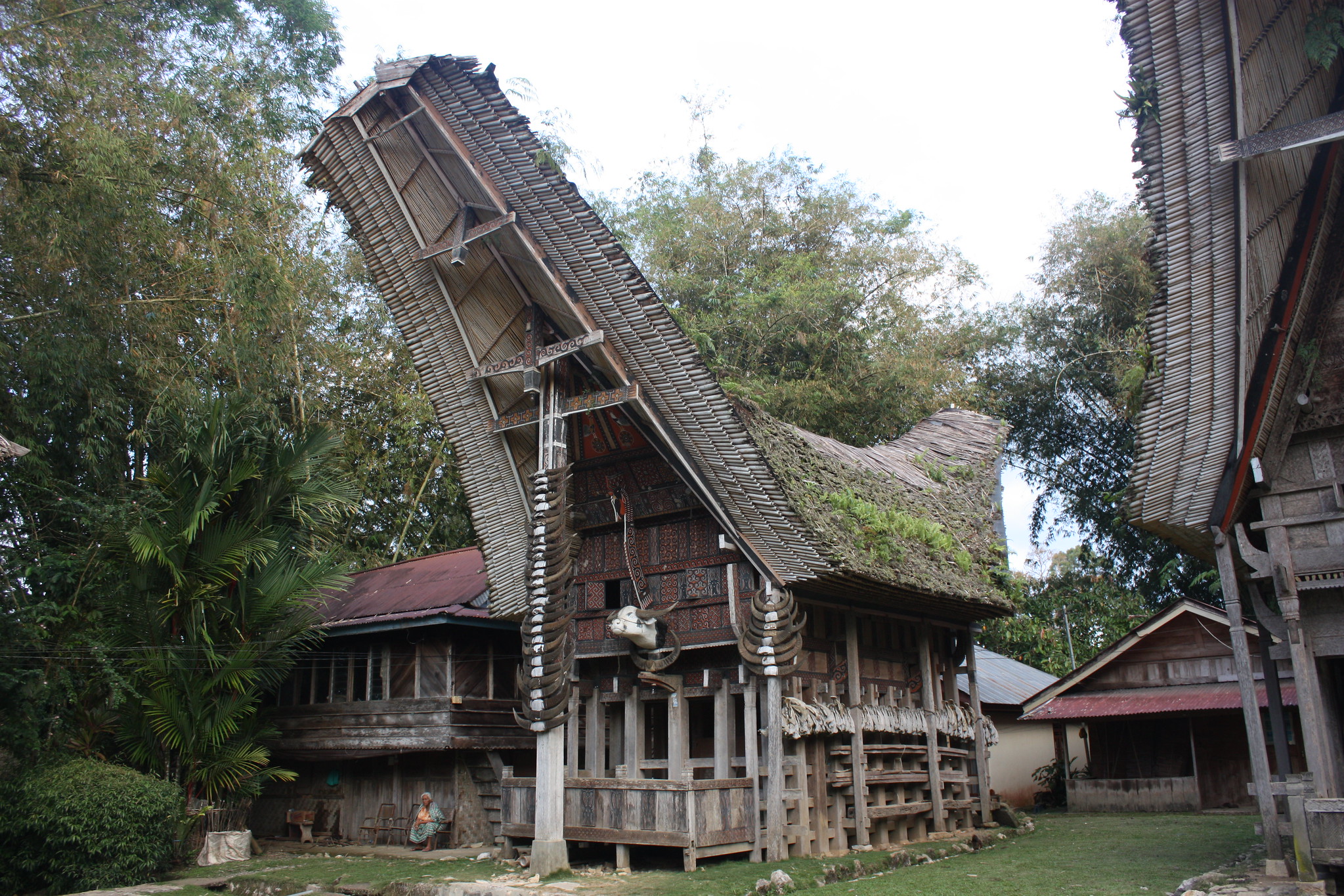
Tongkonan, the houses of the dead (Photo: Kars Alfrink via Flickr / CC by 2.0)
After breakfast, I hopped on the back of his old motorbike and we drove through the countryside, the air humid and the surrounding fields a vivid emerald green after the rainfall. Sulawesi is vast and largely untouched. You can drive for miles without seeing much evidence of human habitation, save for the occasional cow or buffalo, and maybe a chicken or two running in front of the bike.
We passed clusters of small villages spread over the landscape where children and animals ran in and out of wooden houses. It is in these small villages that a unique way of life holds on. Like stepping back in time, the land is untouched by modern consumerism. Heavy machinery and high-rise buildings are an alien concept. People work the fields with a scythe and almost everything seems to be done by hand.
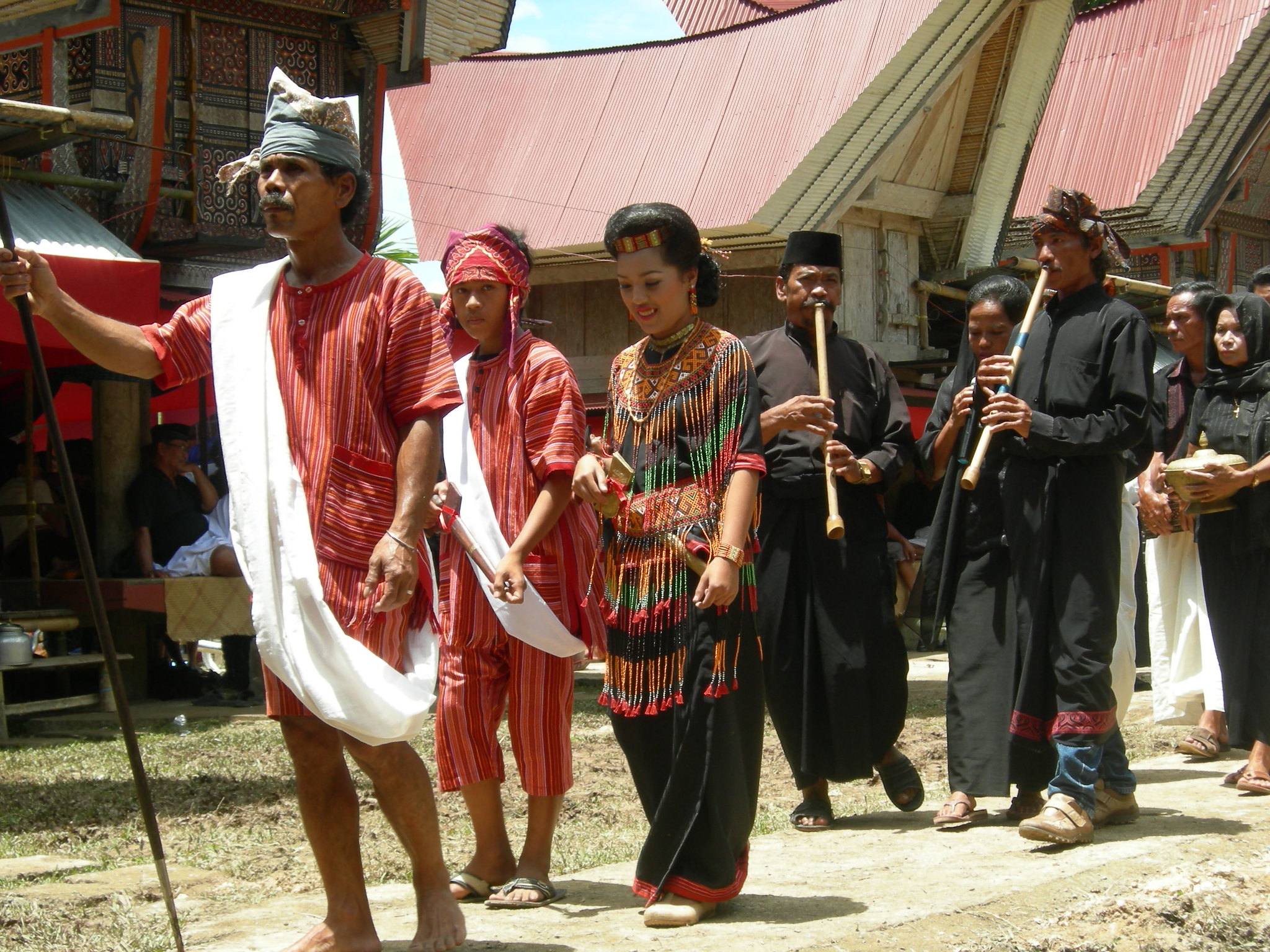
Traditional funeral attire (Photo: Lombardi via Flickr / CC by 2.0)
Aluk to Dolo
Aluk to Dolo means “The way of the ancestors” and it is the religion of the tribal people here in this region of Sulawesi. They believe that once a person dies, they are not truly dead. They refer to them as “still sick”. It is their belief that the deceased person’s spirit cannot move on until the funeral rites and ritualistic sacrifices are performed. They believe that the spirit cannot physically leave the body until a sacrifice has been made. Only when the first drop of blood flows from the first sacrificed animal, does the spirit finally leave the body and allow the deceased to begin their journey into the afterlife.
They worship their ancestors with the utmost respect, believing these souls can bring them good fortune, luck, and protection if honoured correctly during (and after) their passing. The bodies of the deceased are embalmed at home and often kept in the house of the family or in a specially-made Tongkonan (a traditional house of the dead) until the funeral can be held. During this time, they are still given food and water and held in conversation. Any guest in the house must go and pay their respects to the dead and ask how they are.
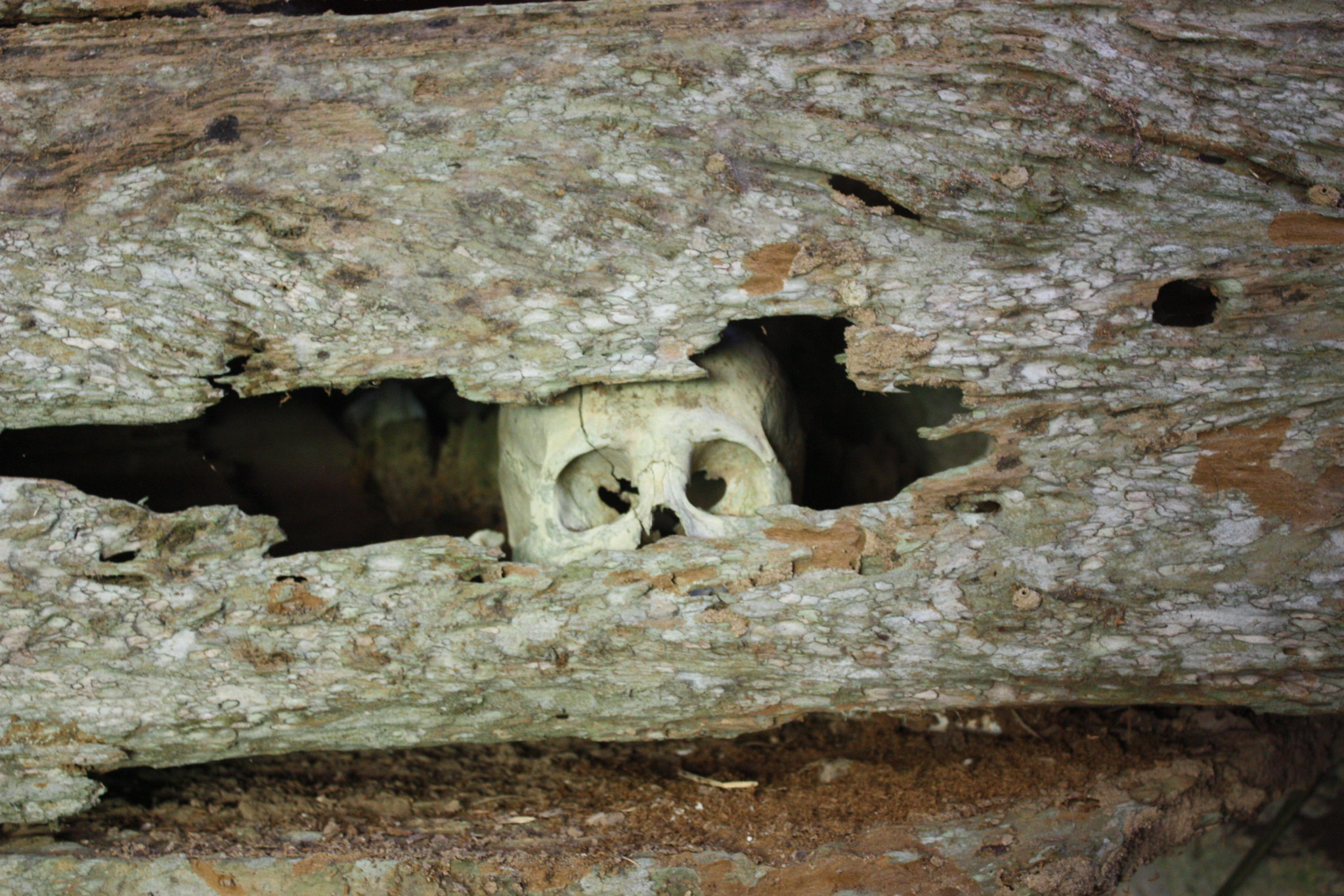
Burial caves of Toraja (Photo: Arian Zwegers via Flickr / CC by 2.0)
Forget weddings. Funerals are a big deal in Tana Toraja. The cost of them is so great that it can take an entire family several years to save up enough money. Sometimes hundreds of people attend the celebration from all of the surrounding villages. Distant relatives from near and far will make the journey to pay their final respects.
The funeral I was invited to was that of a woman who had already been dead for four years. When we arrived, the wooden coffin had been prepared and was on a bamboo platform where people were already sitting, patiently waiting for the festivities to begin. This was the section reserved only for family members and honoured guests, and I was invited to sit next to the coffin. I felt a little guilty that some random stranger would be perceived as so far up in the pecking order of guests when I had never met any of them until today.
I was showered with gifts of coffee and cake and cigarettes, as were all the other guests. Elderly women enquired whether I was married and gleefully tried to introduce me to their sons and grandsons. Several attempted to make marital arrangements on the spot. I received several marriage proposals that day, which I had to respectfully decline.
The Funeral Rites of Tana Toraja
Despite not wanting to go to the bull slaughter, Johannes had forgotten to mention that the key component to the funeral rites of the Torajan people is that of ritualistic animal sacrifice. So you can imagine my confusion when guests were arriving with gifts of live pigs, which they tied to long sticks and carried into the arena that had been erected around the Tongkonan.
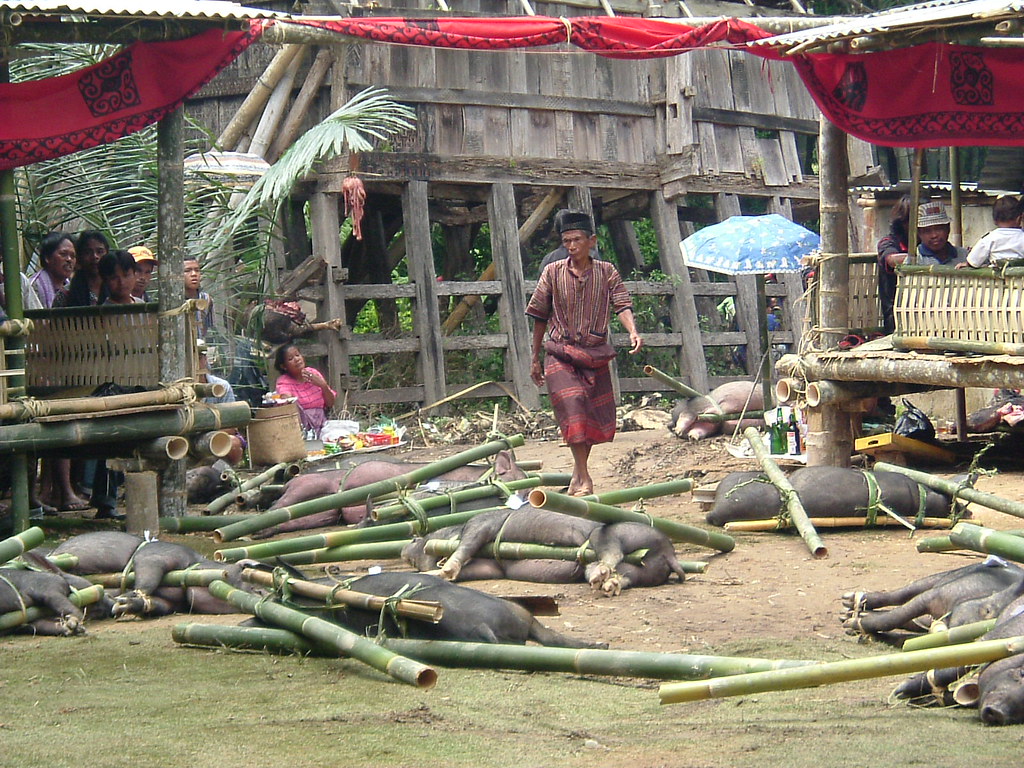
Gifts of pigs at Torajan funeral (Photo: Kars Alfrink via Flickr / CC by 2.0)
As if the demonic screams of some 30 pigs wasn’t enough to set your teeth on edge, the excitement grew into a furore when the first buffalo was brought in. My guide turned to me and explained that the sacrifice would begin after a traditional dance, where the family, dressed in red and black clothing, danced with a long red ribbon held between them.
Then the sacrifices began. Some 30 pigs were slaughtered one after the other and finally, the buffalo was pierced with a knife in its jugular artery. Afterwards, the family hoisted the coffin up into the Tongkonan, as the old woman came towards me with a sweet, toothless smile, brandishing in her hand the severed pig’s leg.
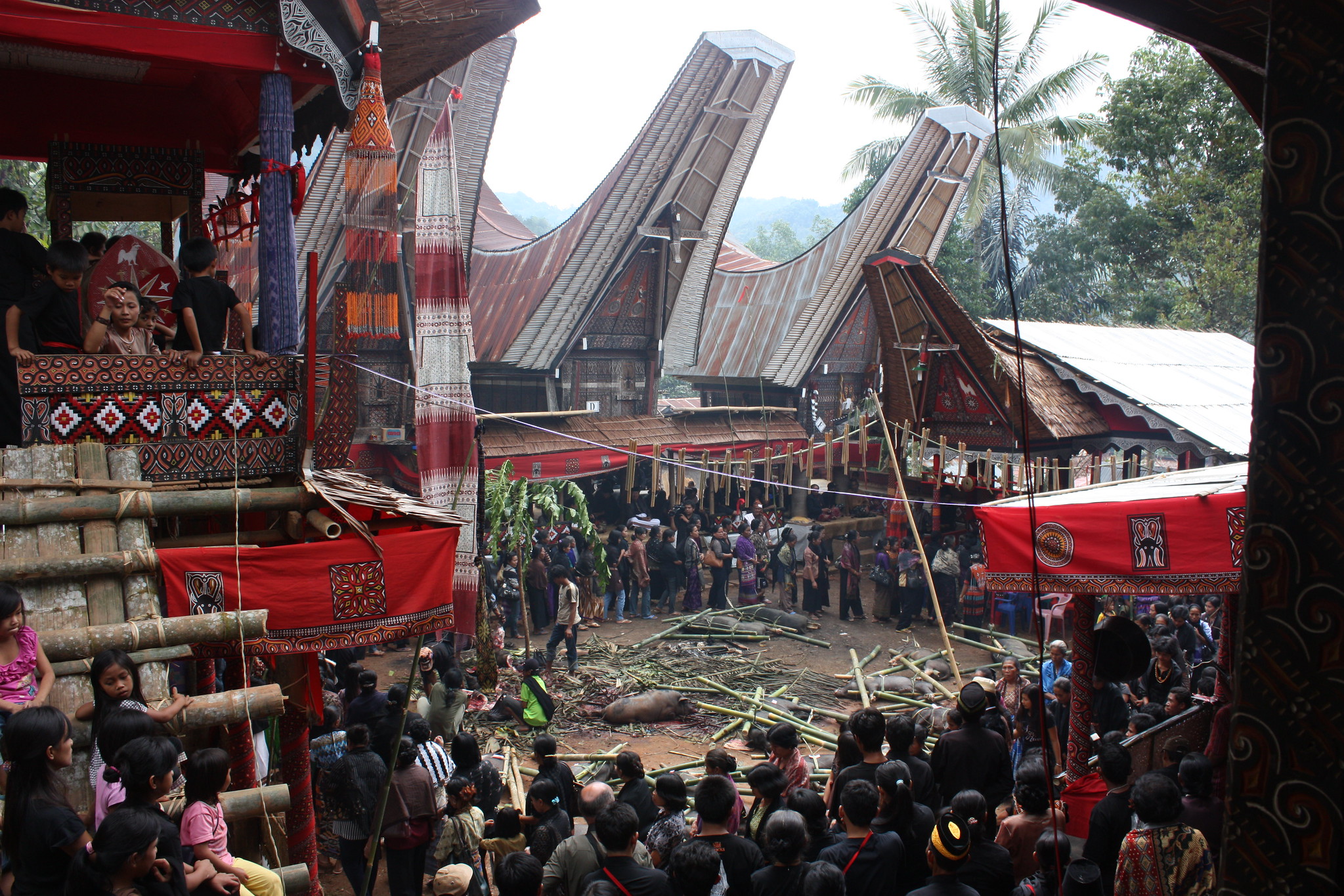
Torajan funeral (Photo: Arian Zwegers via Flickr / CC by 2.0)
Houses of The Dead
After the funeral, we ascended a steep hill on the chugging motorbike to reach the burial cliffs. Towering above us were jagged grey cliff faces, and carved deep into the stone were graves and rows of Tau Taus; wooden effigies of the deceased, believed to stand guard over the burial sites and protect the surrounding villages. Only people of a high social stature have these, usually indicated by the number of buffalo sacrificed at their funeral. For most, in order to have a Tau Tau, at least 40 buffalo would have to die.
We passed the cliffs slowly and drove on to a small stream with a wooden bridge and stone steps. Across the stream, we entered a scene straight out of Indiana Jones: the mouth of a cave filled with hundreds of human skulls. More Tau Tau resided in the gloom of the cave, barely visible in the dark, and up on the wooden rafters above were the precariously balanced coffins. Stacks of skulls sat on the rocks jutting from the earth with offerings scattered around them.
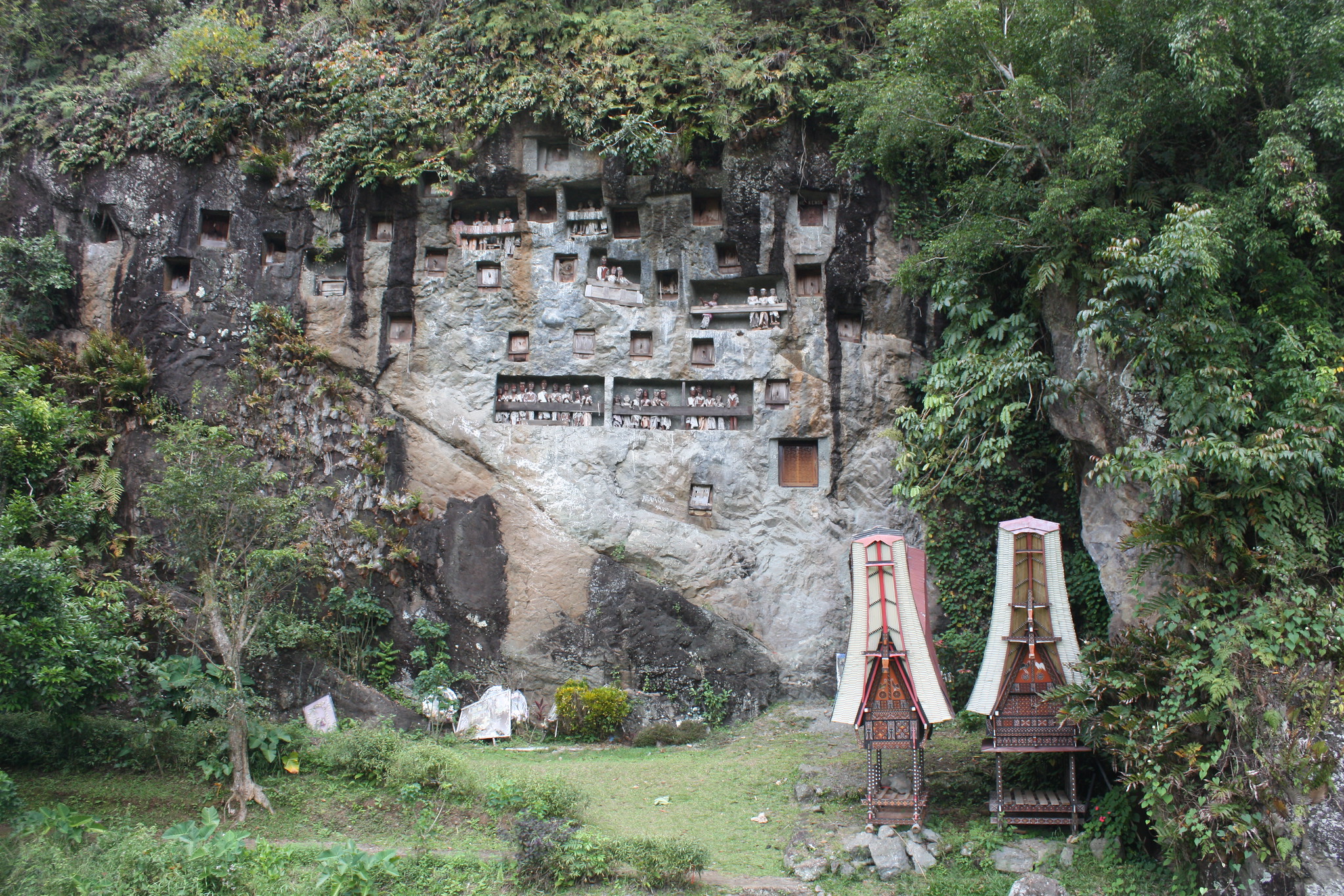
Burial cliffs and Tongkonan (Photo: Arian Zwegers via Flickr / CC by 2.0)
Finally, we made a stop at the baby tree, which fortunately hasn’t been used in some 50 years. This large, gnarled tree had what appeared to be little wooden doors in the trunk. This is where babies are buried if they pass away before growing their milk teeth. The belief states that the tree acts as a new womb for the spirit of the baby and that the tree watches over the family. If the parents have another child, it will grow up to be big and strong and live to an old age like the tree.
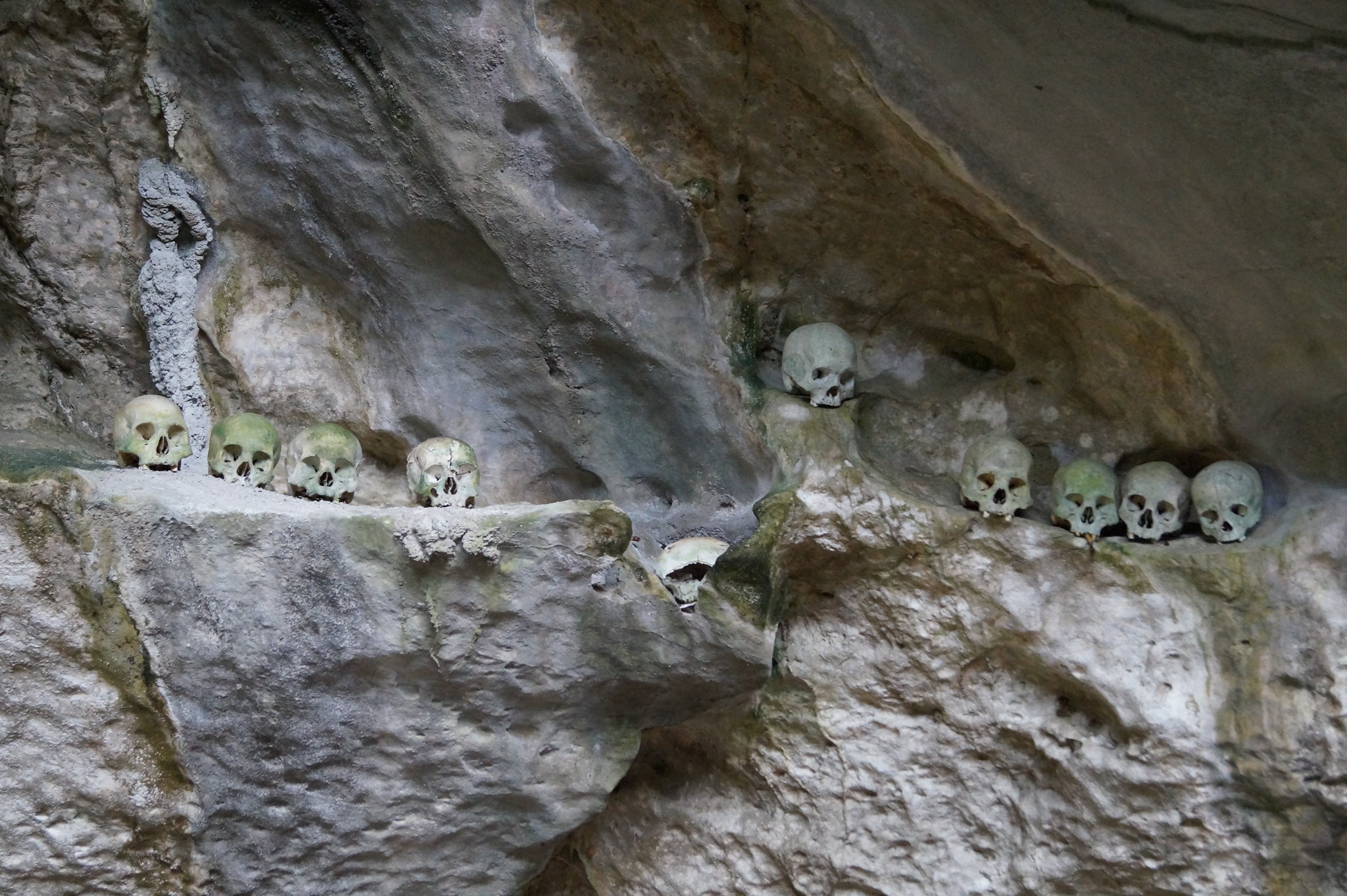
Burial caves in Toraja (Photo: Niek van Son via Flickr / CC by 2.0)
Toraja has a certain kind of magic about it, and the people there are deeply connected to the earth and spirits, living in harmony with both. They do not seem to live in fear of death, but rather see it as something to be celebrated, which left a profound, lasting impression with me long after.
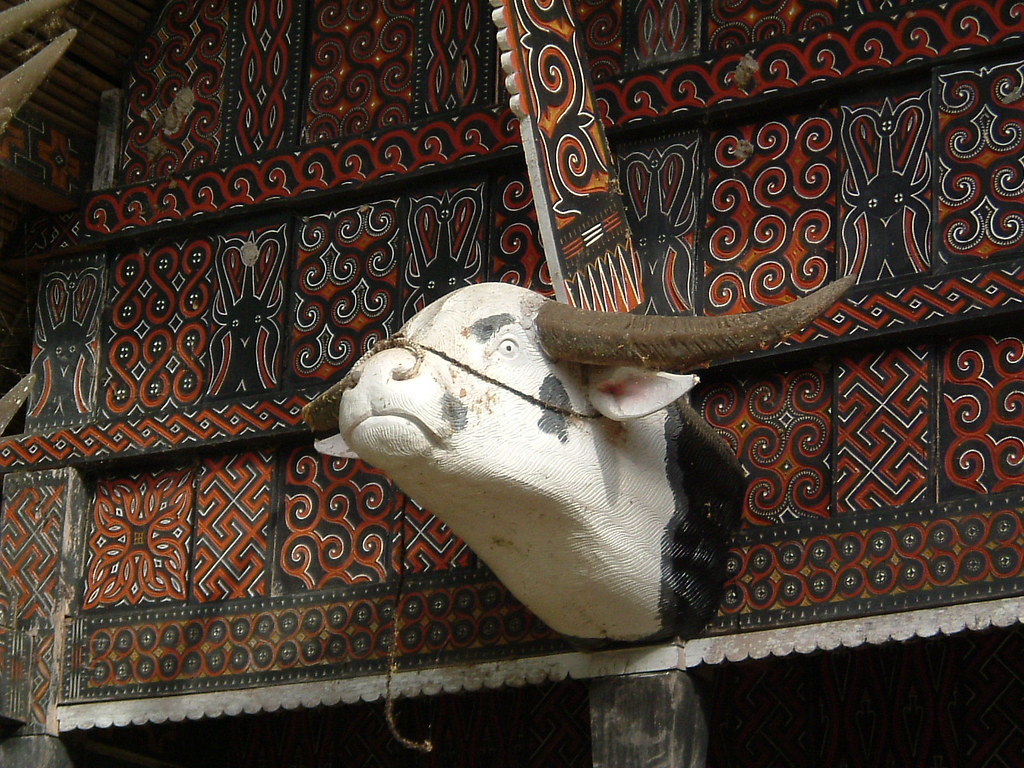
Traditional house decorations (Photo: Kars Alfrink via Flickr / CC by 2.0)